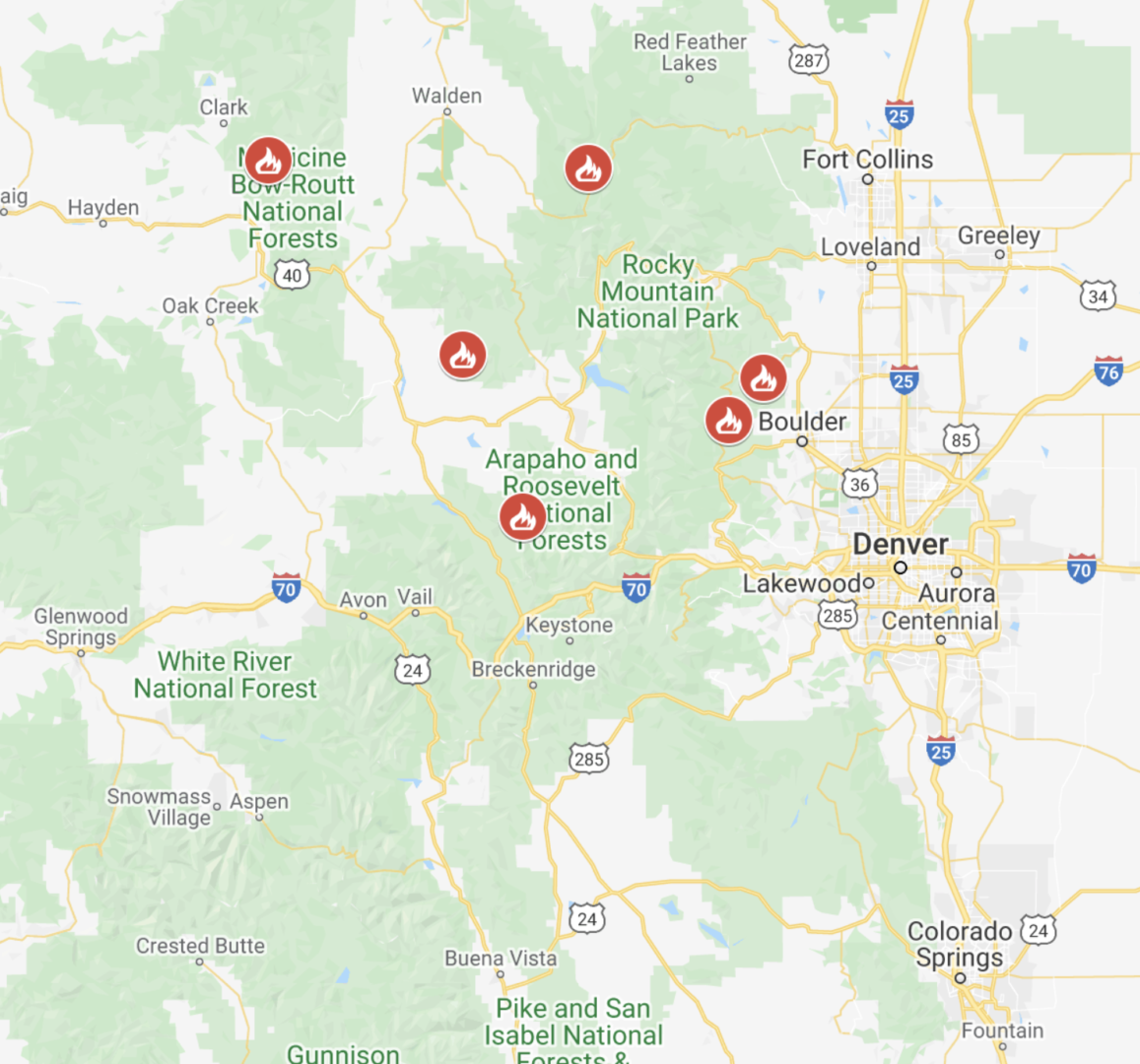2020 has been a whirlwind with COVID-19, an upcoming election, the Black Lives Matter movement and disastrous wildfires still sweeping through America’s West Coast and Colorado’s Rocky Mountains.
These wildfires have become progressively worse over time as a direct result of climate change. More than five million acres of trees have burned this year due to an overall increase in heat and a decrease in rain and snow. Add in strong winds and a lack of education around forest fires, and this is a recipe for disaster.
Humans were responsible for 97% of wildfires between 1992 and 2020. These activities have included unattended campfires, littered cigarettes, arson and even a gender-reveal party gone wrong.
Severe wildfires sweeping through the nation’s forests will cause a depletion in carbon, therefore increasing the temperature. This cycle decreases the amount of moisture in the soil and atmosphere, which is what trees depend on to survive.
The aftermath of wildfires includes erosion, floods, landslides, worsened water and air quality and higher pollution rates as debris scatters. Barren land and loss of vegetation put the climate at risk of these adverse effects.
Climate change has also impacted the likelihood of trees growing back fast and healthy in the areas where the wildfires occurred. Most tree species cannot grow in an environment that is drought-stricken and plagued by heat. Many of Colorado’s vital species, such as ponderosa pines and Douglas firs, are still struggling to grow after the 2002 Hayman forest fire just northwest of Colorado Springs. This foreshadows what is to come with the regrowth of Colorado’s forests after the fires in 2020.
The Cameron Peak Fire, incited by low humidity and strong winds, has become the largest wildfire in Colorado history and burned over 167,000 acres. Today, this fire is only 56% contained, an explanation for Denver’s consistently foggy days and vibrant sunsets. This fire began over the warm Labor Day weekend and was diminished by the unusual snowfall following the weekend. Immediately following that cold burst, temperatures have remained in a solid 70 to 80 degree range for the last six weeks.
The second wildfire in Boulder county was set aflame on Oct. 17. This fire was sparked by no precipitation, low humidity and continuous winds. This fire has burned through 312 acres as of Oct. 18. Parts of Ward, Gold Hill, Lefthand Canyon and Sunshine Canyon were ordered to evacuate.
Haze, destruction and heat waves have been impacting our environment for years, but it has only gotten worse as a direct result of climate change. The adverse effects of these devastating wildfires will continue to impact our atmosphere.












